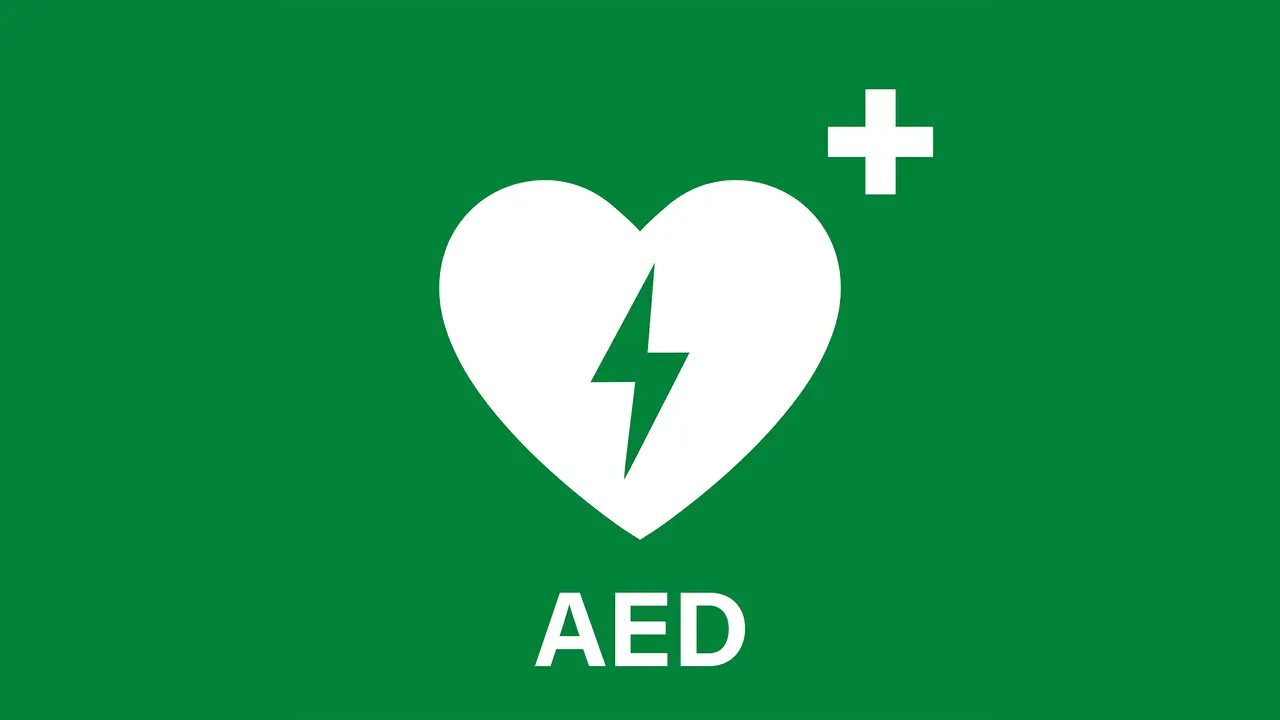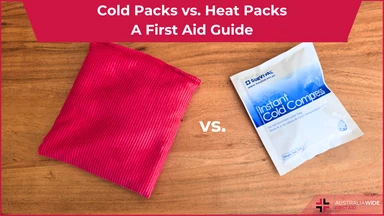Top Reasons You Need AED Training


Those who are in need of assistance due to a sudden cardiac arrest can get it via an automated external defibrillator, or AED for short.
It is an advanced medical gadget that is simple to operate that can analyze the rhythm of the heart.
The abbreviation for "automated external defibrillator" (AED) is "AED." Because it is automated, it will perform all of the laborious tasks for you.
Because of how simple it is to use, even inexperienced bystanders won't have any trouble operating an AED in the event of a cardiac arrest.
A defibrillator is a device that sends an electric pulse, often known as a shock, to the heart in the event that the heart has stopped beating and needs to be restarted. Defibrillators, using the same methodology, are also able to prevent arrhythmias or correct them (an uneven heartbeat or one that is too slow or too fast). A tiny, compact, and lightweight device known as an Automated External Defibrillator (AED) can "jump-start" a heart that has stopped beating by delivering an electric shock to it.
It will perform an automatic analysis of the victim's heart rhythm when they are in cardiac arrest. When necessary, it will administer an electric shock to the heart in order to restart the muscular contractions and get the heart back to its normal rhythms. An automated external defibrillator (AED) system consists of the AED machine itself in addition to its peripherals, which may include pad electrodes, a battery, and an adaptor (if one is needed). The most majority of contemporary AEDs offer users vocal instructions to follow. AEDs are generally carried by first-responders to emergencies, and they receive training on how to use them. Because of how well they work, automated external defibrillators (AEDs) are becoming increasingly accessible all around the world. You may now find automated external defibrillators (AEDs) not only in hospitals, clinics, and ambulances, but also in offices, schools, shopping malls, libraries, and airports. Previously, AEDs were only found in healthcare facilities. An automated external defibrillator will begin analyzing the patient's heart rhythms as soon as the electrodes are placed on the patient's chest and connected to the device. A shock will not be given until it is determined that the patient has a curable case of ventricular fibrillation.
The fact that training is not required to use an automated external defibrillator (AED) is a significant advantage in the treatment of cardiac arrests that occur outside of hospitals. A heart that has stopped beating normally (also known as being in asystole) cannot have its rhythm restored by a defibrillator (ay-sis-stuh-lee). Only when the defibrillator detects an electrical pulse that can be treated will it begin to function. If a victim of sudden cardiac arrest receives defibrillation within the first few minutes after the event, their chances of survival are significantly increased. The availability of more defibrillators and the ease with which they can be accessed will lead to an increase in the overall survival rate.
Electrodes on the AED have to make direct, sanitary touch with the victim's dry skin in order to be effective. The gel that is located on the bottom of the electrodes functions as an efficient conductor. They need to have their buttons undone or their garments pulled back in order to make room for the defibrillation shock (be considerate here). Remove any sweat or moisture that may be present on the skin.
Turn the power on to the AED. CPR should be performed in the meanwhile.
Imagine the face of a clock with the hands set to 10:20; they are high on the left and low on the right. You should now have a good sense of where the electrodes should be positioned on the chest as a result of reading this.
When you are positioning the electrodes, you will need to apply at least 8 kilograms and up to 11 kilograms of pressure. You can get a rough estimate of this with the help of the AED.
1. You need to have specialized training to utilize an automated external defibrillator False. To properly utilize an automated external defibrillator (AED), it is not necessary to have training or experience in the medical field. You will be guided by the AED, mostly through audio prompts and occasionally through textual instructions. Just make sure to act in accordance with what it specifies. If you are in a situation that requires an AED, you should not spend any time. It's possible that there is one in the first aid kit that is located nearby. Use it. You have a very strong probability of being able to help someone survive sudden cardiac arrest if you have access to an automated external defibrillator (AED), regardless of how much expertise you have in the field. In any case, you should not delay calling for emergency assistance. You will be able to receive instructions from the operator.
2. The AED can mistakenly cause someone's death This is a myth. This is not something that can be done with an AED. An automated external defibrillator (AED) will normally deliver a charge of three thousand volts in less than one-thousandth of a second. This is sufficient power to illuminate a 100-watt bulb for twenty-three seconds. AEDs are designed to respond effectively to sudden cardiac arrest despite the fact that they have a significant amount of power. Only when it is necessary, it will give the patient a controlled electric shock to restart their heart. You and the victim will not be shocked out of turn by the defibrillator. If a person's heart is healthy and does not require a shock, then a defibrillator will not administer one even if it is applied to that individual.
You don't have to entertain the idea that you're playing Russian roulette with someone else's life or that you're responsible for their situation spiraling beyond the point of no return. In point of fact, the use of the equipment will only improve the victim of cardiac arrest chances of survival in favor of the sufferer. In Australia, Good Samaritan rules are in effect (and they do in many other countries). In the event that your attempts to provide first aid are unsuccessful and the individual subsequently passes away or experiences harmful effects, you will not be held legally accountable for the incident. In the event that it can be demonstrated that a responder's conduct was reckless, exceptions may be made.
3. The AED can only be used once Myth: This is not true. These days, automated external defibrillators (AEDs) are made to last and can administer anywhere from 10 to 100 shocks throughout the course of their operational life. An automated external defibrillator (AED) will, in addition to a computer processor that can detect irregularities in the heart and determine when a shock should be administered, incorporate a battery and sensors (electrodes). Maintaining the sensor pads and battery system in accordance with the instructions provided by the AED manufacturer is required of owners in order to keep the AED in good functioning condition and ensure that it is always available for use.
4. The patient will thrash around wildly after receiving a defibrillator shock This statement is untrue. Unrealistic depictions of cardiac arrest can be found in a wide variety of media, including medical dramas, soap operas, and blockbuster movies. It is very evident that the reality does not translate nearly as effectively on TV. Instead, we get the encouraging message "Clear!" and observe the shock absorbers being put in place. The person who is having a cardiac arrest then jerks violently, with their limbs flailing and their bodies arching up like a rag dolls. It is quite improbable that the impression produced by such animations will persuade viewers to take action in the event of a real-life disaster. When a shock is delivered by an automated external defibrillator (AED), the recipient's shoulders may shift slightly as a result.

July 29, 2024
Heat packs are a valuable tool in first aid for treating a variety of conditions, particularly those involving chronic pain, muscle tension, and joint stiffness. Proper use of heat therapy can enhance recovery and provide significant pain relief. This guide outlines how and when to use a heat pack effectively.

June 14, 2024
In the realm of first aid, the use of cold packs and heat packs is fundamental for managing a variety of injuries and conditions. Knowing when to apply each can significantly impact the effectiveness of the treatment and the speed of recovery.

June 11, 2024
Cold packs are a fundamental tool in first aid for managing a variety of injuries and conditions. Their proper use can significantly reduce pain, swelling, and promote faster recovery.